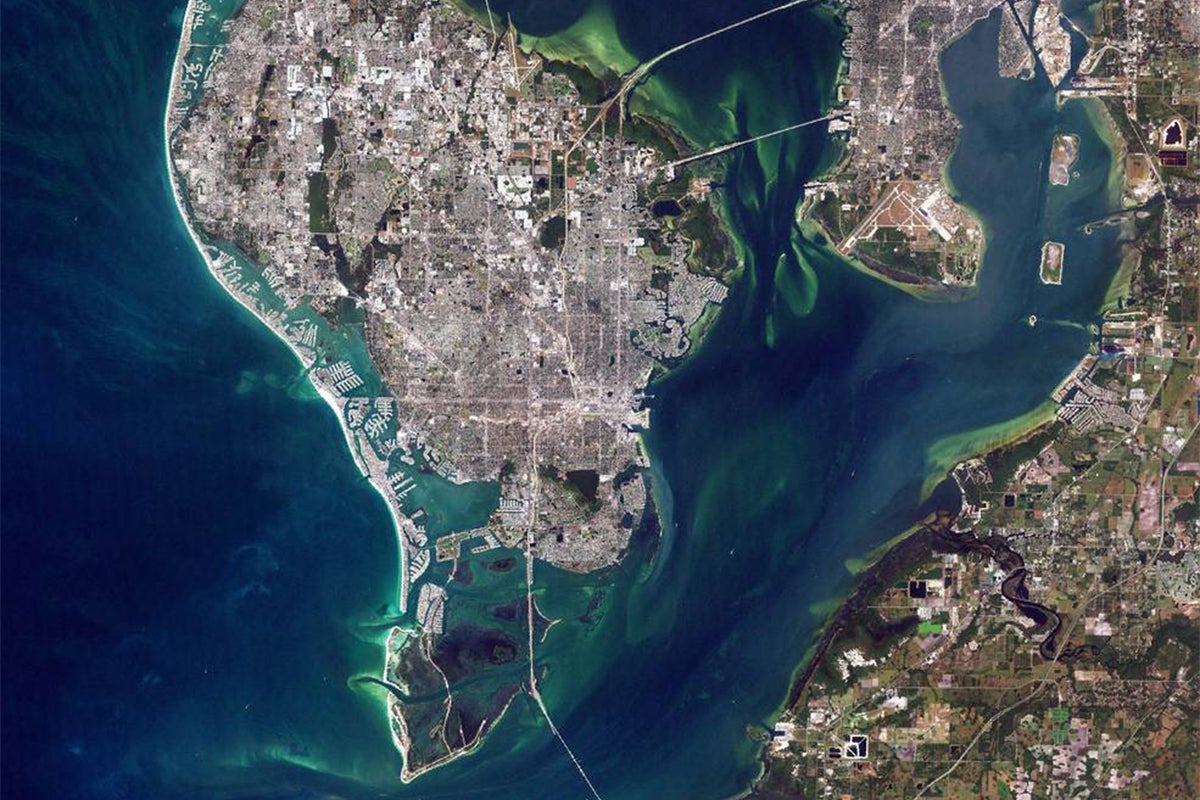An inexpensive, natural countermeasure to curb the devastating economic and ecological impacts of Florida red tide is now under study at UCF.
The study focuses on spraying a clay solution to sink the cells (flocculate) of Karenia brevis (known commonly as Florida red tide) to the bottom sediments. Florida red tide is the algae responsible for vacation cancellations and a ruined seafood industry along Florida’s coast, which was particularly devastating in 2018-20. The same harmful algal bloom cost 12 coastal counties a combined $130.6 million in damages. More than $14 million in emergency funds were designated for beach cleanup in 2018.
“With this grant, we are a step closer to better understanding and mitigating the effects of this particular harmful algal bloom.” – Kristy Lewis, UCF assistant professor
Studies outside the U.S. have shown this method of clay flocculation to be effective, but there are lingering questions about whether this approach is environmentally safe. Assistant Professor Kristy Lewis and graduate student Victoria Roberts recently received a $250,000 grant in partnership with the Woods Hole Oceanographic Institute and Mote Marine Lab to answer those concerns.
“Red tide blooms are very complicated and still not fully understood by the scientific community,” Lewis says. “With this grant, we are a step closer to better understanding and mitigating the effects of this particular harmful algal bloom.”
Scientific literature dating back more than 30 years validates the use of clay flocculation for algae bloom control. South Korea and China routinely use this method, and environmental studies done in South Korea confirm there are no significant negative impacts on the local ecology. However, use of this clay control mechanism has not been approved for use in the United States because of concerns of its environmental impact on native habitats and organisms. Exactly what happens to the algae on the bottom of the ocean is one focus of the new research.
The grant comes from a pool of more than $15 million appropriated by the State of Florida through the Florida Red Tide Mitigation and Technology Development Program in collaboration with the Woods Hole Oceanographic Institute and Mote Marine Lab.
Lewis is developing two more red tide proposals to better understand how important fishery species and microbial communities impact the function of marine ecosystems.
“It’s a really exciting research opportunity to help control the spread of red tide and could potentially prevent millions of dollars in lost revenue for Florida communities.” – Kristy Lewis, UCF assistant professor
Lewis has been with UCF’s Department of Biology since 2018, and is a member of the National Center for Integrated Coastal Research (UCF Coastal).UCF Coastal blends the expertise of researchers across multiple disciplines and colleges to provide a holistic viewpoint of threats to Florida’s coastal ecosystem. Lewis’ research focuses on natural and anthropogenic-induced changes on marine food webs and coastal communities. Lewis recently published a paper in the Proceedings of the National Academy of Sciences.
“This mechanism is one of the few that have been effective at controlling harmful algal blooms like red tide,” Lewis says. “It’s a really exciting research opportunity to help control the spread of red tide and could potentially prevent millions of dollars in lost revenue for Florida communities.”




